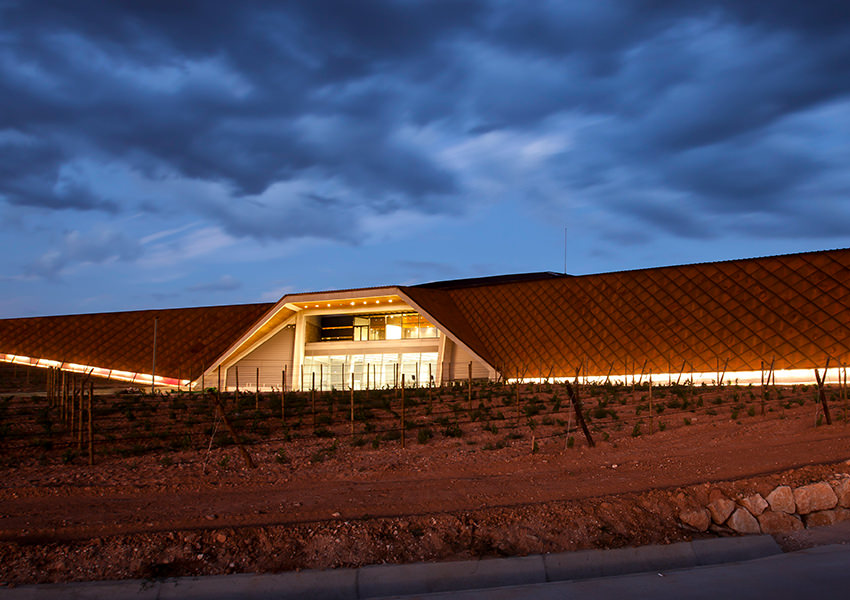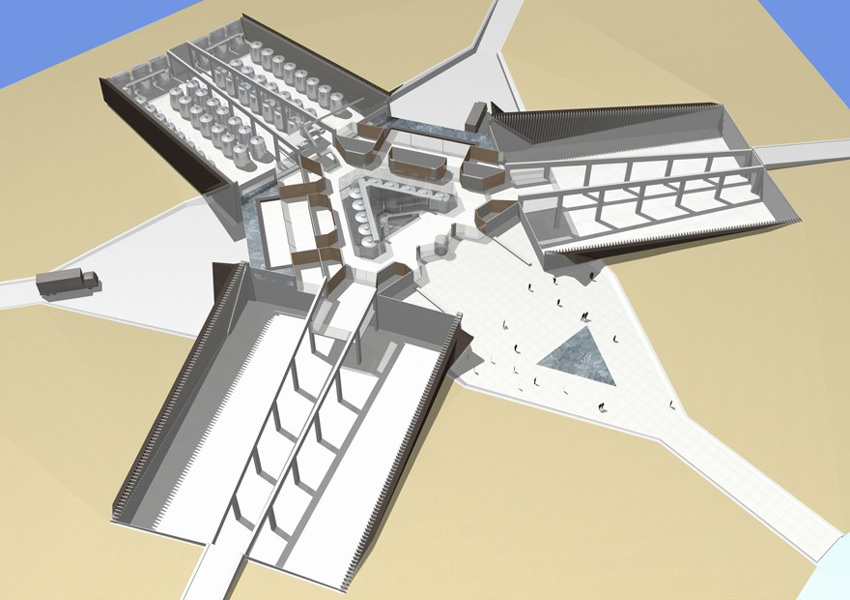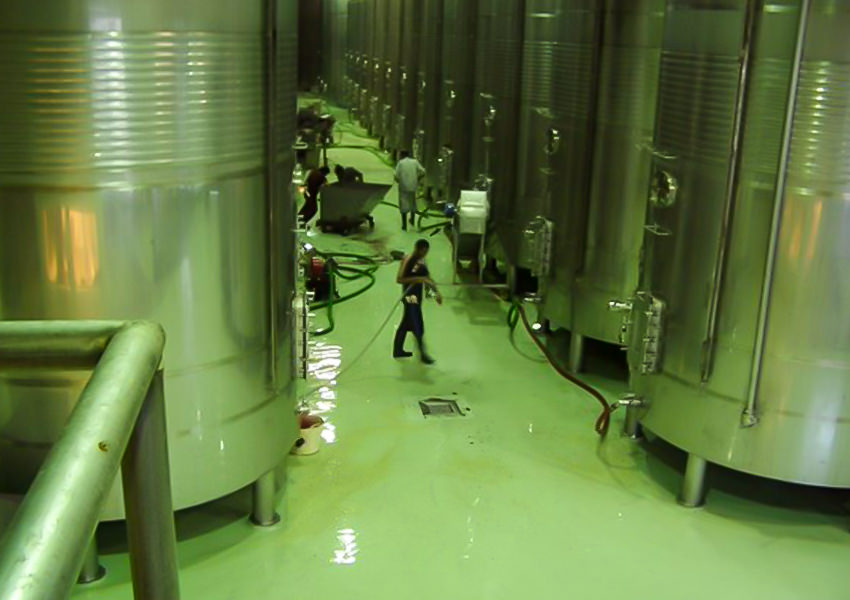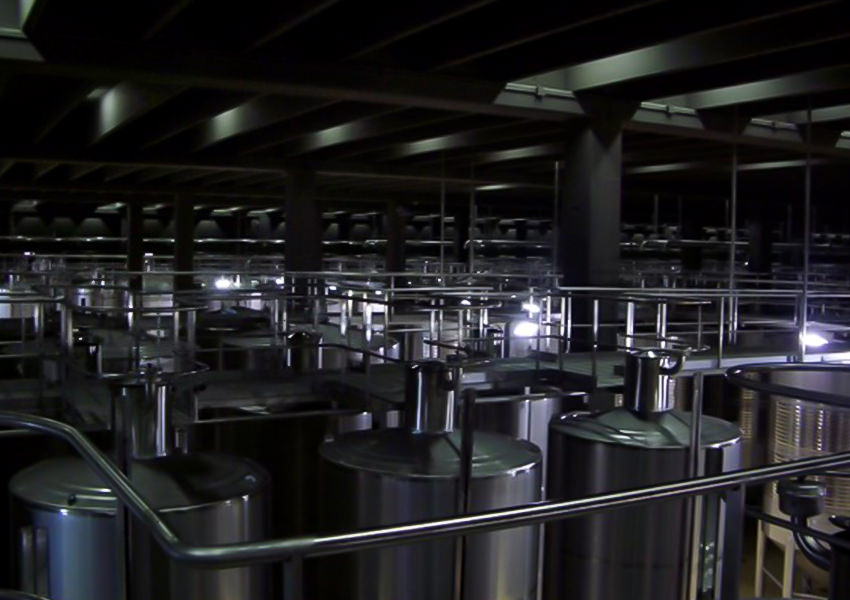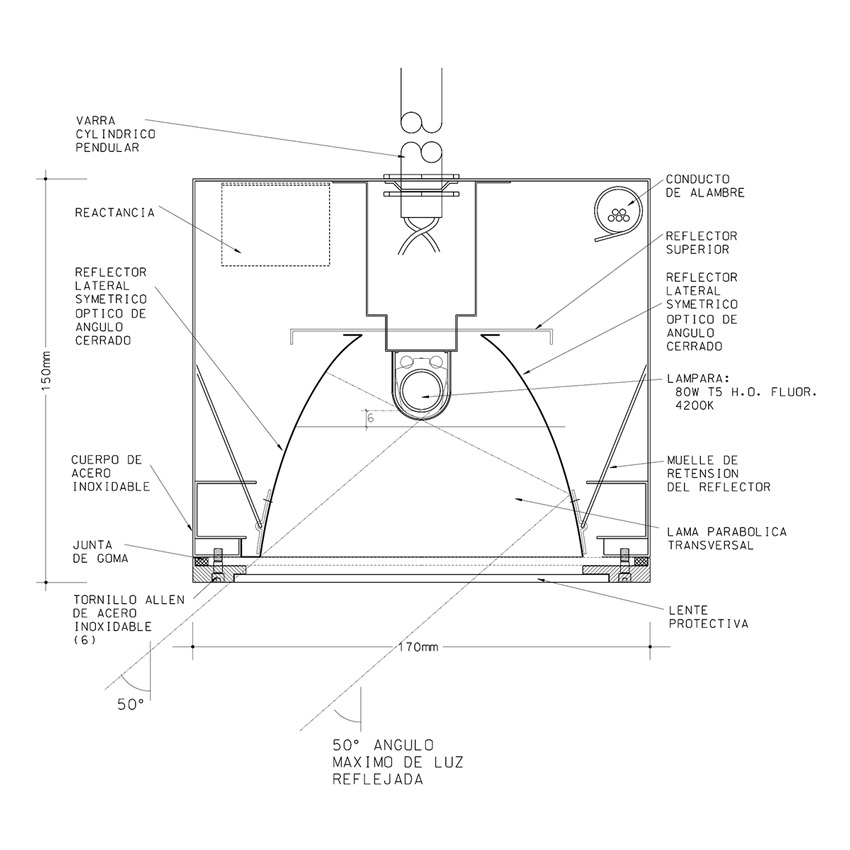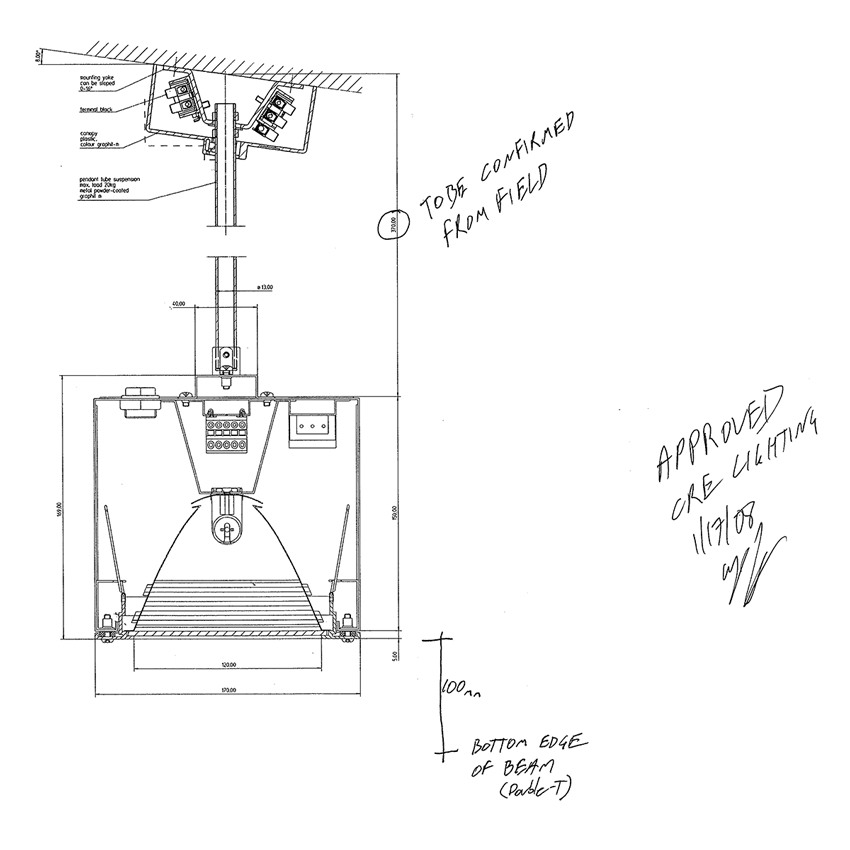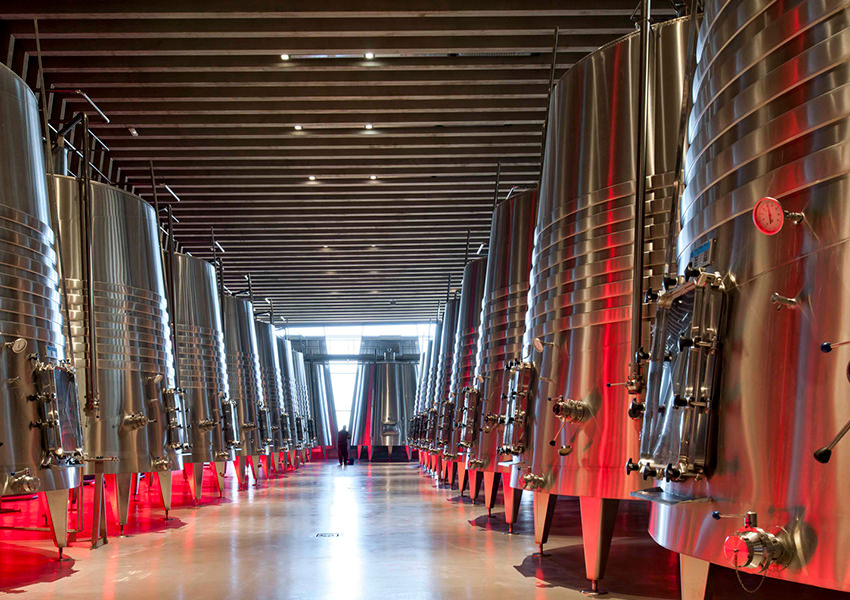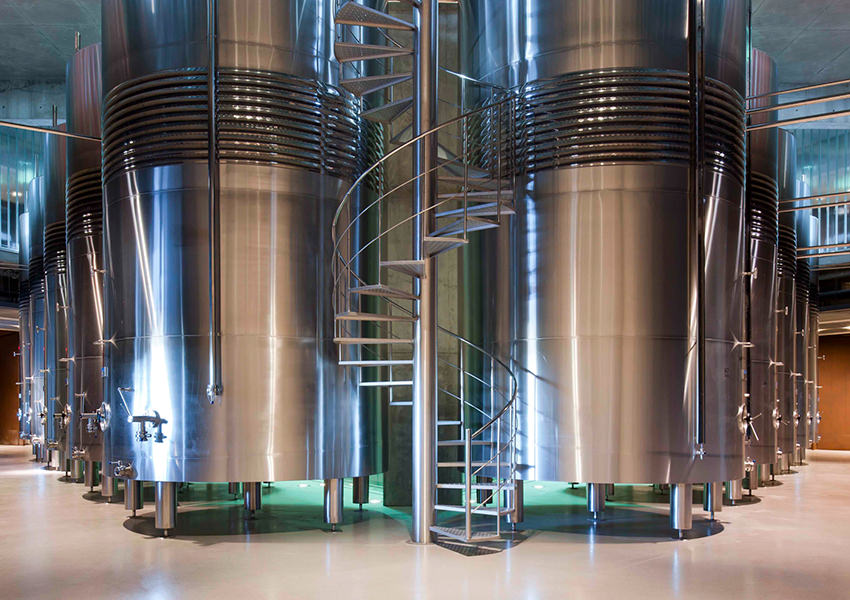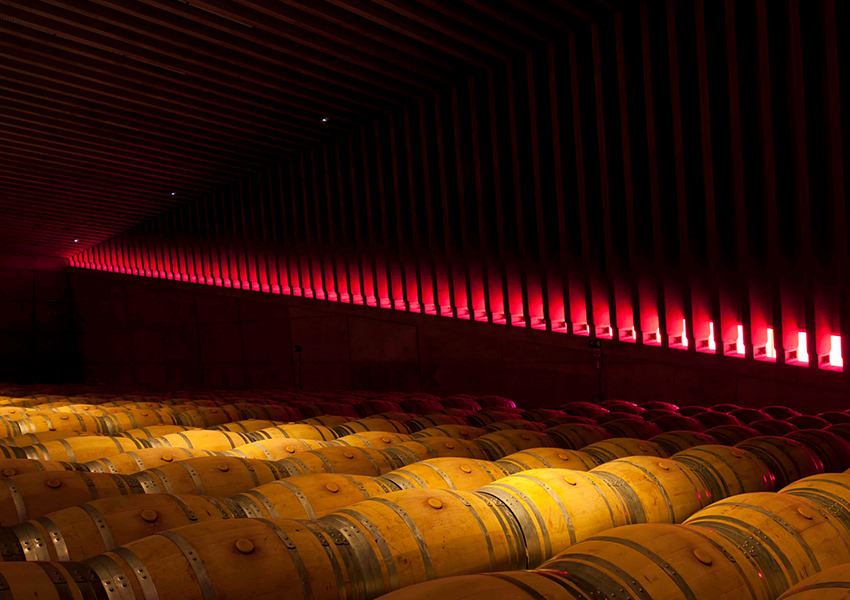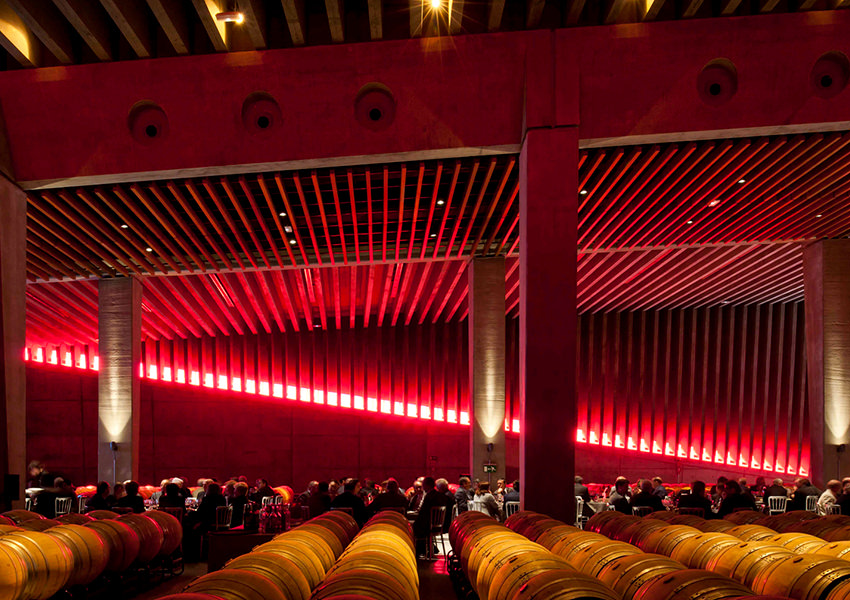Intimate Industrial Lighting
Bodega Faustino is really called Portia, but everyone knows it as Faustino. Faustino is a Rioja winery and Portia is their Ribera del Duero winery. Faustino wanted to build a state-of-the-art winery that could make high-quality wine and simultaneously entertain groups of visitors. There is no difference in regulation for artisanal and industrial work spaces when they both require fork lifts driving around, the transport of thousands of gallons of liquid and noxious fumes. This meant that the lighting had to have 3 settings: industrial level lighting for major operations, work lighting for normal work and dramatic visitor lighting. And, visitors and winemakers had to be able to be in the same space at the same time.
1: Faustino at Night, 2: Diagrammatic Drawing
We asked the Client, “Who’s going to be visiting the winery?” The response was there are many different people interested in visiting wineries, but there are roughly two groups of expectations: There are the wine affeccionados who want to see the latest technology in winemaking and there are the ones who expect to see monks rolling barrels around in a warren of candlelit catacombs. So, our challenge was to make 8-metre-high industrial spaces filled with the latest and greatest technology seem intimate and serve the diametric purposes of winemaking and tourism simultaneously.
In many of the latest wineries, the architect designs the winery for winemaking and then designs a predetermined path through that winery that caters to tourists.
3: Industrial Winery, 4: Tourist Path at Alkorta Winery
Foster & Partners dedication to transparency in design did not want to do that. We concluded we had to create intimate environments in industrial scale spaces. We wanted a minimum of light, but had to be able to create spaces for moving heavy machinery. Since the operations requiring heavy machinery could be isolated away from tour groups or done after hours we designed a fully integrated industrial lighting system that was hidden in the architecture. This mainly consisted of custom-designed IP65, narrow-angle fluorescent fixtures, dimmable.
5: Spec Drawing, 6: Shop Drawing
For the “normal work day/intimate tourist” lighting setting we endeavored to create work spaces with the minimum amount of light required to do the work. We studied exactly what needed to be lighted for the winemakers and provided the 200 lux of light only where they needed it. We lighted the temperature gauges. We lighted the tank level indicators. And we lighted the tops of the stainless steel vats so that they could see inside them or sit there and take measurements. This approach generated “industrial task lighting.”
7: Faustino Tanks, 8: Faustino Central Vats
In the wing of the winery where the barrels were kept, we had a setting for tourists and for allowing the wine to sleep. Should anyone need to enter with a fork lift, they could light only that section where they were working to the industrial lighting level with the narrow-angle fixtures.
